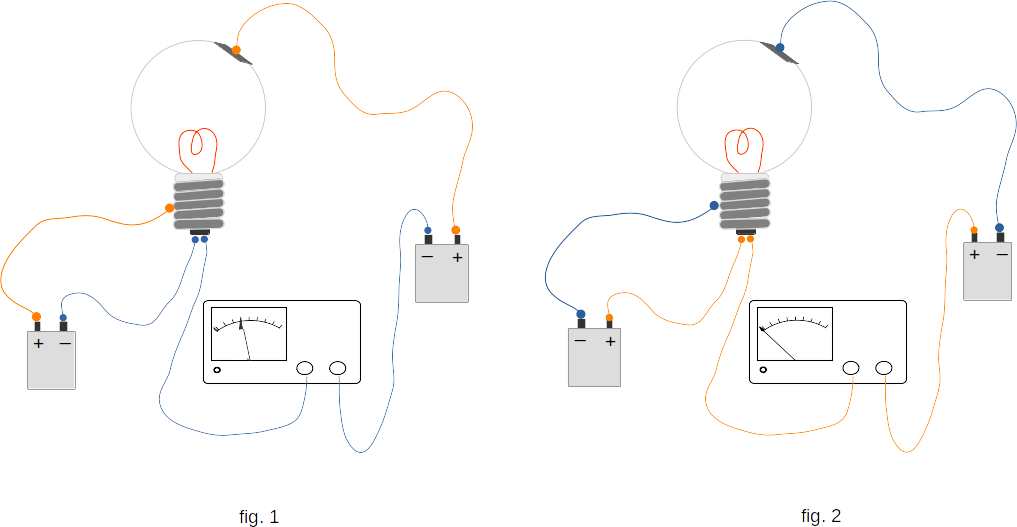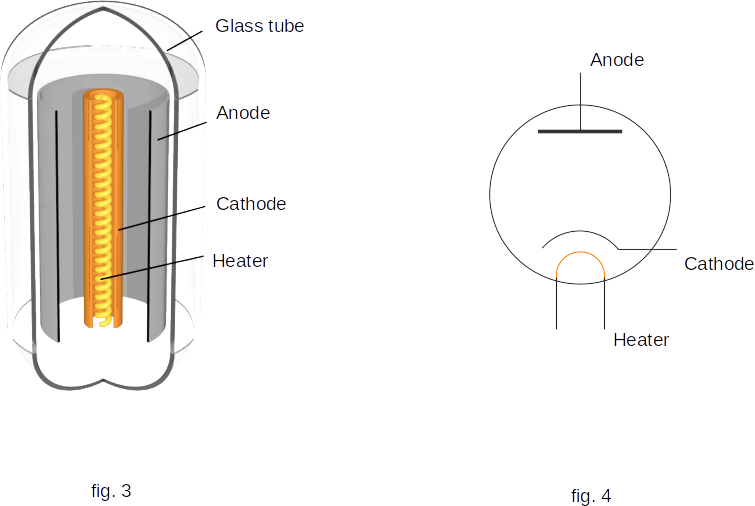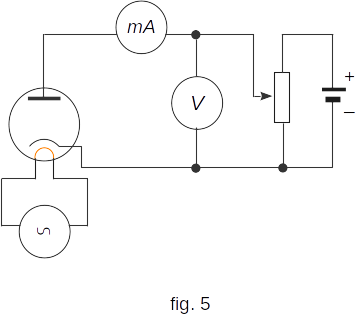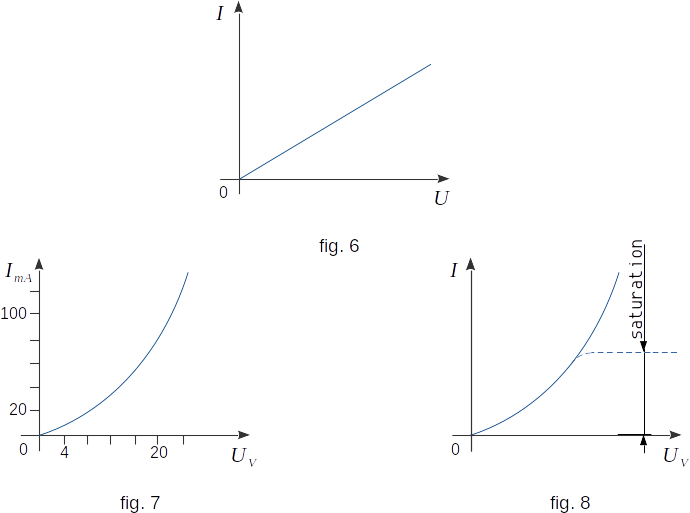From the Electrical current in different environments
112. Two-electrode tube - diode
Two electrodes in a tube, from which air is pumped out to a vacuum state, will be unequal due to the phenomenon of thermoelectronic emission if one of the electrodes is heated and the other remains cold.
This inequity was first noticed by the famous American inventor Edison, who conducted experiments with light bulbs. The first electric bulbs differed from modern ones in that their filament (metal or coal) was placed not in a gas medium, but in a vacuum. Edison soldered an additional electrode into the bulb, a metal plate that could be connected to the positive or negative pole of the voltage source 1. The filament was connected to the pole of voltage source 2, as a separate battery of cells (fig. 1).
It turned out that with the cold filament the electric current in the circuit of voltage source 1 was absent at any polarity of switch-on. If the filament was hot, the galvanometer in the circuit registered the electric current only when the positive pole is connected to the plate and the negative pole to the filament. At the opposite connection ("minus" to the plate, and "plus" to the filament) there was no current in the circuit (fig. 2).

It is not difficult to understand what is the matter here. An electric field is created between the filament (cathode) and the plate (anode) when the voltage source is switched on. If the positive pole is connected to the anode, the field is directed from the plate to the filament and causes electrons to cross the thin space and reach the plate. At other switching on the field, on the contrary, prevents the transfer of charge and the circuit is disconnected.
Edison did not understand the reasons for the phenomenon he discovered and did not use it. In modern technology, electronic tubes with two electrodes - diodes have found the widest application. They are used in all cases where alternating current needs to be converted into a current of one direction or, as is said, rectified.
Vacuum Diode Device
Inside a cylinder made of glass or metal-ceramic, from which air is pumped out to a pressure of 106 mm Hg, two electrodes are placed (fig. 3). One of them - cathode - has the form of a vertical metal cylinder, covered with a layer of oxides of some metals - oxidized. (When heated, the surface of oxide cathode emits much more electrons than the surface of pure metal). Inside the cathode is an insulated conductor (heater) heated by alternating current. The heated cathode emits electrons that reach the anode when the tube is switched on accordingly. The anode of the tube is a round or oval cylinder which shares an axis with the cathode. The schematic diagram of the diode is shown in figure 4.

The essential properties of any electronic device reflect its voltamper characteristics, i.e. the dependence of the electric current on the potential difference at the terminals of this device. To obtain the voltamper characteristic of the diode it is possible to use the circuit shown in figure 5.

In contrast to the characteristic of a metallic conductor (fig. 6), this characteristic is not linear (fig. 7). One of the main reasons for nonlinearity of the characteristic is the presence of an electronic cloud near the red-hot cathode. The fact is that at low voltage between the anode and the cathode only very few electrons, flying out of the cathode, reach the anode. Most immediately return to the cathode under the influence of repulsion forces acting from the cloud space charge.

The higher the voltage between the anode and cathode, the lower the space charge of the electron cloud, the more electrons reach the anode and therefore the higher the electric current flowing through the tube. If the cathode is not covered by an oxide layer, at a sufficiently high voltage the space charge may completely dissipate. In this case all electrons that left the cathode reach the anode and at further voltage increase the electric current does not change, saturation occurs (dotted line in fig. 8). In an electron tube with an oxide cathode saturation cannot be achieved, because it requires such large potential differences, at which the cathode is destroyed.